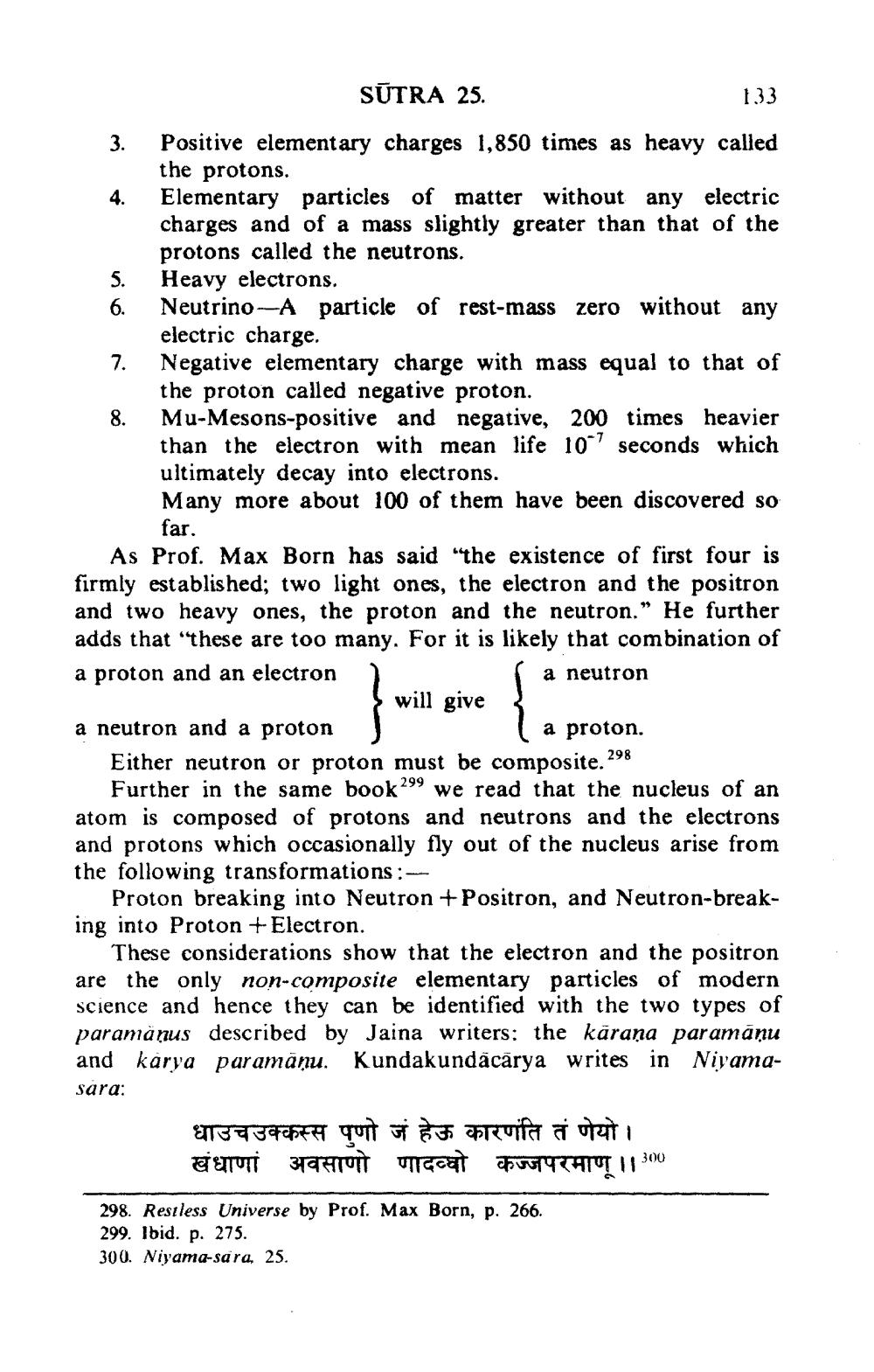________________
SUTRA 25.
1.33
Positive elementary charges 1,850 times as heavy called the protons. Elementary particles of matter without any electric charges and of a mass slightly greater than that of the
protons called the neutrons. 5. Heavy electrons.
Neutrino-A particle of rest-mass zero without any electric charge. Negative elementary charge with mass equal to that of the proton called negative proton. Mu-Mesons-positive and negative, 200 times heavier than the electron with mean life 10 seconds which ultimately decay into electrons. Many more about 100 of them have been discovered so
far. As Prof. Max Born has said "the existence of first four is firmly established; two light ones, the electron and the positron and two heavy ones, the proton and the neutron.” He further adds that 'these are too many. For it is likely that combination of a proton and an electron
sa neutron
will give } a neutron and a proton
( a proton. Either neutron or proton must be composite. 298
Further in the same book 299 we read that the nucleus of an tom is composed of protons and neutrons and the electrons and protons which occasionally fly out of the nucleus arise from the following transformations:
Proton breaking into Neutron + Positron, and Neutron-breaking into Proton + Electron.
These considerations show that the electron and the positron are the only non-composite elementary particles of modern science and hence they can be identified with the two types of paramánus described by Jaina writers: the karana paramánu and karya paramāņu. Kundakundācārya writes in Niyamasara:
धाउचउक्कस्स पुणो जं हेऊ कारणति तं णेयो। खंधाणां अवसाणो णादव्यो कज्जपरमाणू ।। 300
298. Restless Universe by Prof. Max Born, p. 266. 299. Ibid. p. 275. 300. Niyama-sara, 25.




